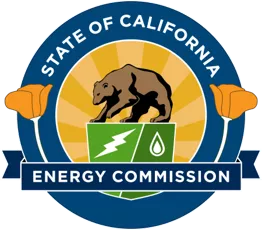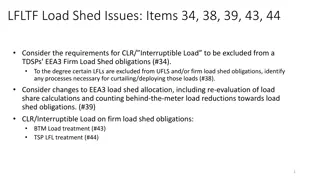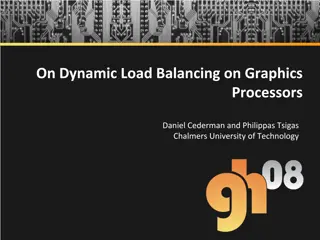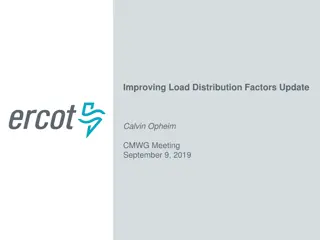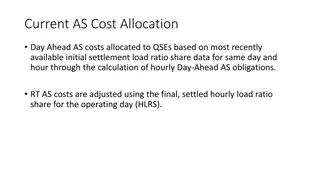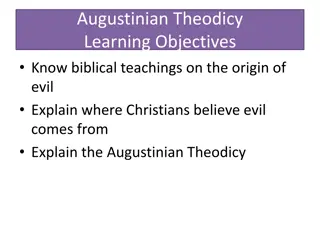Overview of EV Infrastructure Load Model (EVIL) by Alexander Lonsdale
The EVIL model, developed by ADM, provides hourly electricity load shapes for transportation in commercial and residential sectors. It uses R executable scripts and static outputs to drive model output, facilitating scenario building for utility rate structures and energy forecasts. The model functions through various inputs like Elasticity.csv, Prices.csv, LDV_Energy.csv, and more. Key drivers include base load shapes and economic inputs, with drivers like transportation electricity demand forecast and economic adjustment factors playing crucial roles.
Download Presentation

Please find below an Image/Link to download the presentation.
The content on the website is provided AS IS for your information and personal use only. It may not be sold, licensed, or shared on other websites without obtaining consent from the author. Download presentation by click this link. If you encounter any issues during the download, it is possible that the publisher has removed the file from their server.
E N D
Presentation Transcript
EV Load Shape Presentation Alexander Lonsdale April 22, 2020
Order of Presentation Overview of ADM s EVIL model What is the EVIL model? How the model functions Key model drivers Compare base load shapes 2020 IEPR Update Potential model improvement for 2021 IEPR Model Improvement? Closing remarks 2
What is The EVIL Model? The Electric Vehicle Infrastructure Load Model or EVIL was constructed by ADM to provide CEC with transportation hourly electricity load shapes for commercial and residential sectors. EVIL: Model is a series of R executable scripts. Utilizes a series of static and auxiliary model outputs to drive model output. Works as a platform for future scenario building for utility electricity rate structures and transportation energy forecasts. 3
How the Model Functions Elasticity.csv PercentTOUbyYear.csv Economic Inputs Prices.csv Rates.csv Seasons.csv LDV_Energy.csv NEV_Energy.csv PersonalVehicleChargingLocationShares.csv Base Loads Transportation Electricity Forecast EVIL MODEL GVWR3456_Energy.csv BaseLoadShapes.csv GVWR78_Energy.csv Bus_Energy.csv Figure 205: Schematic of EVIL Model Adapted From: ADM Associates, INC ALL_EV.csv 4
Key Model Drivers Generic Base Load Shapes Economic Inputs Transportation Energy Forecast 5
Driver 1: Transportation Electricity Demand Forecast Aggregate electricity consumption from the TEDF for the following categories: Light duty GVWR 3456 GVWR 78 Bus 6
Driver 2: Economic Inputs % TOU Participation Price Elasticity Price Ratios Economic Inputs 7
Driver 2 : Economic Inputs Economic Inputs adjust the base load in each forecast zone. Adjustment factors are determined as follows: ? = max 0,1 + ???% ? ?? 1 Where: ? is the adjustment factor for hour h TOU% is the percentage of customers that have a TOU rate ?? is the price ratio for hour h, defined as the price prevailing at hour h divided by the lowest available price for the given day, at the same location ? is the Elasticity Factor Source: ADM Associates, INC 8
Driver 2: Economic Inputs Elasticity factors are an adjustable input to the model. ADM determined default values by comparing ChargePoint data to Joint IOU report TOU% requires a forecasted value by utility Can model different participation possibilities Adjustment factors decrease an hour s base load percentage In some cases where Price ratios are very large, adjustors may drive the base load percent of daily charge to zero 9
Driver 3: Base Load Shapes Base load shapes are generic load shapes that distribute % of load across an 8760 hour year. 256 weekdays and 110 weekend days in a year. Primary Data Sources: ADM obtained data from one municipal fleet of fourteen heavy- duty buses, and five fleets of medium-duty shuttle buses ChargePoint Data 500 single family residential accounts 2,000 commercial accounts, including 95 multifamily apartment complexes The following mappings show which load shapes are combined to produce commercial and residential load shapes. 10
Residential Load Shape Single Family Residential Load Shape PEV Load Multi Family 11
Commercial Load Shape BUS MD-HD GVWR 3456 GVWR 78 Commercial Load Shape Commercial Personal Destination LDV Government 12
IOU Load Shape Comparisons A special thanks to the following IOUs for making this part of the presentation possible. We appreciate your team's work! Pacific Gas and Electric (PG&E) Southern California Edison (SCE) San Diego Gas and Electric (SDG&E) Comparisons are made between IOU and output data from the EVIL model. Each IOU's data availability varies. Based on data availability, EVIL output was selected to align with IOU dimensionality. 13
PG&E Residential Load Shape 2020 14
PG&E Residential Load Shape 2030 15
Load shapes for 2020 IEPR Using EVIL model as-is for the adopted forecast (low, mid, and high cases) Exploratory worst-case charging scenario What is the impact if peak charging load is coincident with the system peak? 20
Model Improvement? We want to hear from you! What recommendations would you make to enhance the EVIL model for the 2021 IEPR? Consider different or additional economic factors? Enhance base load dimensions? Forecasting %TOU and elasticity? 21
Closing Remarks Link to ADM s complete documentation for the EVIL model, located in Chapter 10: Link: https://ww2.energy.ca.gov/2019publications/CEC-500-2019- 046/CEC-500-2019-046.pdf Contact Information: Email: Alexander.Lonsdale@energy.ca.gov Phone: 916-651-0465 22


